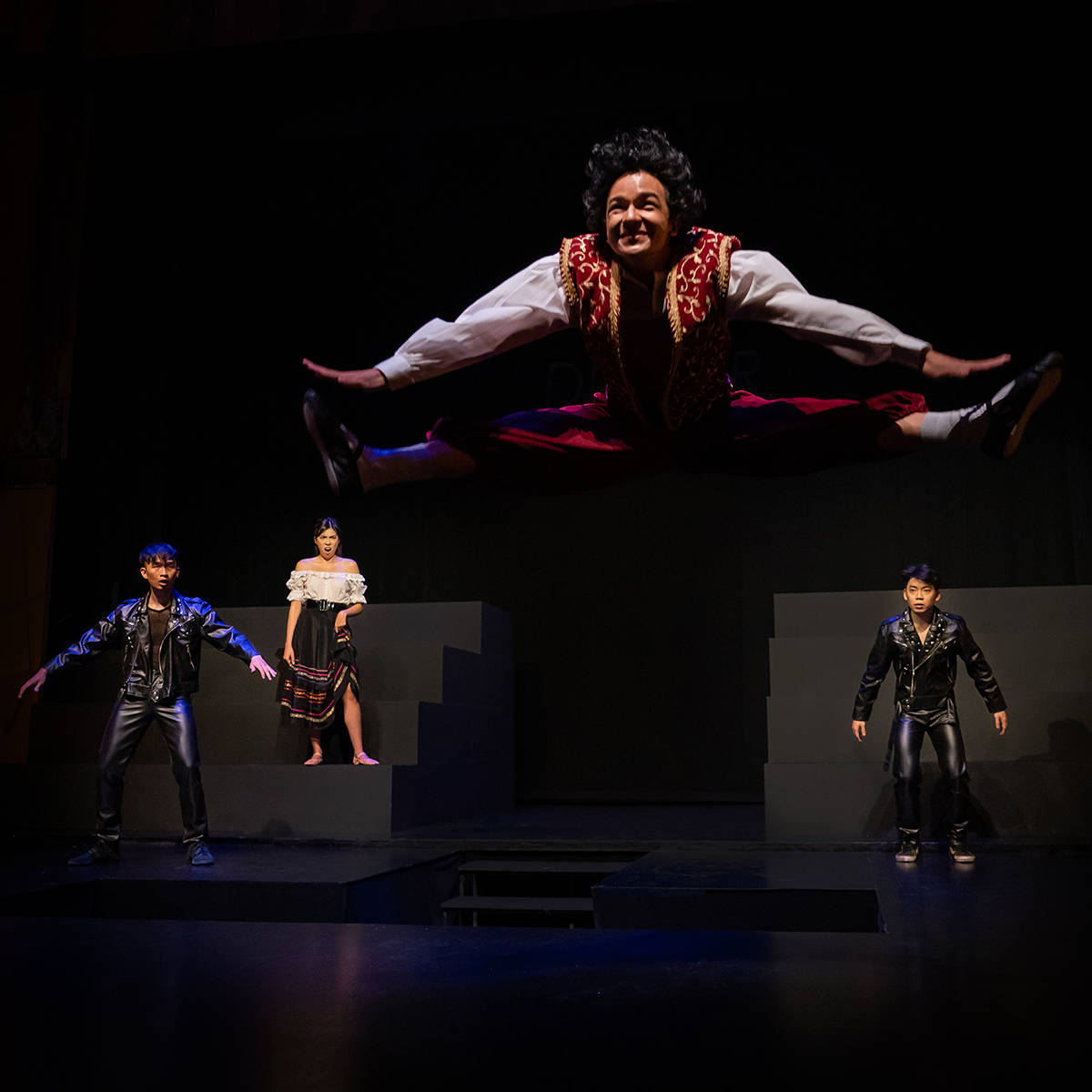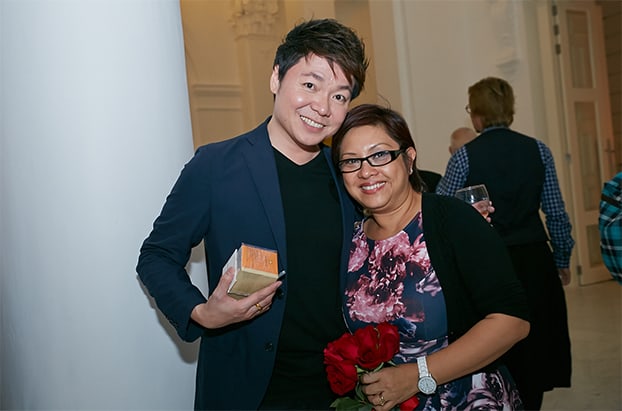Budding fashion designers, take note: the job isn’t all glitz, glamour and runway models. It’s also about hard work and the willingness to let yourself fail – and studying your craft to make yourself better at what you do.
So says top local designer Frederick Lee, with whose work Singaporean audiences are intimately familiar. Apart from his own bridal and fashion lines, Frederick has designed costumes for numerous theatrical productions, winning the 2010 Life! Theatre Awards for Best Costume Design for his work on The Importance Of Being Earnest. In 2004, he was named Designer Of The Year at the Singapore Fashion Awards, and he will once again serve as the director of costumes for the 2013 National Day Parade, after earlier stints in 2008, 2009 and 2011.
We spoke to Frederick about where he finds his inspiration in the theatre and how getting mad was a lot more productive for him than getting depressed.
Have you always known that this was the career for you?
I have fashion design in my blood. While other kids were outside playing, I was inside making clothes for paper dolls. I was an avid artist from a very young age; I was really into drawing and painting and I just loved creating things. I was particularly fascinated with how dresses were made. I remember looking through fashion magazines and just drawing dress after dress.
This is a real passion for me, and it’s a huge part of who I am. Personally, I’m pretty sure that whoever chooses to be a designer makes a choice of the heart, a choice borne out of love. I love what I do. And you know it’s what you want to do for the rest of your life because you can work on a creation for many hours and not realise how much time has gone by. I can’t imagine being anything else.
Tell us a little bit about your process.
I design based on the concept I have in my head, which usually comes when I’m relaxed. I start to sketch, which allows my sub-conscious thoughts to flow onto paper. It’s always a surprise to see what designs develop.
In terms of executing the designs, I have worked hard to master the technical side, so I have an idea of what is possible and how to do it right. I need to understand every part of that process, from the foundation to the finishing touches. There is nothing more important than the integrity of the design from an artistic standpoint. Quality is everything.
You have your own successful fashion company. What keeps you coming back to designing costumes for theatrical productions?
It allows me to combine my passion for the arts and my love for fashion. There are the joys of creating art that is enjoyed by others – audiences, actors, directors, etc. There are wonderfully fun, talented and fantastic people working in theatre and only in theatrical productions am I able to enter another society, another world. I love to examine the components that make that world what it is – to study the choices people make in what they wear, the conditions that force them to wear certain types of clothes, the societal requirements that influence how they choose to dress.
That love, that intellectual curiosity, has led to a career that no other job has brought for me and likely never could. I am challenged, inspired and rewarded in this aspect of my career and I wouldn’t want to do anything else. Not only can I proudly exclaim that I love to get up everyday and go to work – I can also use phrases like ‘Do what you love and the money will follow.’
How do you usually go about designing costumes for a play or musical?
My first approach to designing is to understand the play and make notes about my initial reactions to the characters and their placement within the story. I then go away and look at the characters in more depth, digging into their personal traits and social standing. I also broaden my search by going into my many costume books.
I also have a discussion with the director to establish how he would like to place the production in terms of period and style. I am then usually free to go away and think about the shapes I want to create and the fabrics I want to use. Once I have an outline of what each character might wear, I then begin to design.
Tell us more about your award-winning design for Earnest.
The costumes in Earnest are inspired by the fashion of the Victorian era. I gained inspiration from looking at fashion plates and photographs of real people and existing pieces of clothing from the period – around the late 1890s, when fashion was full of indulgence and luxury. This period is one of the most beautiful eras for men’s fashion, where the silhouette for men is curvaceously shaped to the body.
Recreating this extravagance on stage was an exciting and challenging job. For this production, I meticulously created the sharply tailored morning suits, top hats, silk cravats and flannel suits that were in vogue during the 1890s.
You also designed the gorgeous, sparkly dresses and costumes for W!LD RICE’s La Cage Aux Folles last year – an aesthetic that’s the diametric opposite of the sleek suits in Earnest.
That’s true. The inspiration for La Cage came from the Art Deco – or style moderne – period, which began around 1908 and carried on well into the late 1930s. Think Busby Berkeley and the Ziegfeld Follies too – elaborate musical production numbers that often involved a host of beautiful showgirls usually wearing intricate costumes by designers such as Erté, Lady Duff Gordon or Ben Ali Haggin, weaving in and out of complex geometric patterns onscreen to kaleidoscopic effect.
I created some truly memorable gowns for Ivan – for example, for his stand-out I Am What I Am number that closed Act I, I put him in an all-black iridescent sequinned gown with hand-sewn appliques, embroidered in crystals and acrylic beads, complete with a 24 black silver fox tail stole. Another costume that I truly love is the hand-beaded yellow duchess satin gown, trimmed with ostrich fringe, that was worn by Ivan when he was putting on A Little More Mascara. It was a very glamourous couture gown that took me over a hundred hours to complete.
Would you say that was your most memorable work for W!LD RICE to date?
I could never say that La Cage was my most memorable work because, in each and very production, I let myself be open to inspiration – I live and experience new things and let it speak though my work. And every year has been enriched by the lively pairings of plays and interpreters.
Do you have any advice for students who are thinking about becoming costume designers in the future?
Being a designer isn’t glamorous! It involves a lot of hard work, dedication, passion and patience.
First and foremost, learn patience. It’s the one thing everyone needs. No one is born sewing and designing like [world-famous costume designers] Theoni Aldredge or Trisha Biggar. No one instinctively knows that the essence of tailoring is the simulation of line on the three-dimensional body, or that the substance of dressmaking is in finding sculptural form in the soft materials of apparel. Drawing and sewing and applying art and design to clothes are skills that need time to be learned and developed. Learning everything they can is what all former aspiring designers did before they became professional designers.
To a certain extent, one also has to keep learning and practising, while remaining willing to fail before you succeed. I always say that I learn more from my failures than I do my successes. Failure is always an option because when you learn what doesn’t work, you can understand what does.
One of my inspirations was also pure unadulterated jealousy. If I saw anyone who I thought was maybe better than me, I knuckled down and made myself better. I never got depressed… I got better. Seriously, that really motivated me. Getting depressed didn’t push me forward, getting mad did.
When I was younger, I had no idea what creative inspiration was or how to get it – I do now. I learned a lot about how to think creatively as I got older and let my mind wander as far as it will take me. It’s the only way you can get in touch with the part of the brain that is truly creative. This is something that isn’t built-in and just happens with creative people; these pathways in the brain must be actively forged and built by using them.
Finally, become a regular at the library, reading books on fashion, fashion design, tailoring, dressmaking, art theory, design theory, fine art, and whatever you can get your hands on. There’s a lot of learnin’ in them library books… you just need to pick them up, open them up… and open your mind!
























